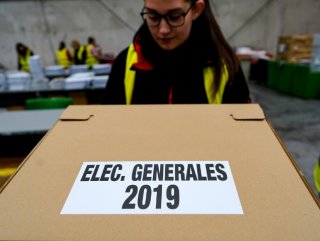Spain will hold its third general elections in four years on Sunday amid an atmosphere of indecision and rise of the far right.
FAR-RIGHT PARTY AHEAD
Polls suggest that around 40% of the electorate was undecided just a week before the national vote.
Since 2015, when Spain’s predominantly two-party political system came to an end, the country has had major difficulties forming a government. In the 2015 elections, two new parties broke onto Spain’s political landscape – the far left Podemos Party and center-right Ciudadanos (Citizens) Party. Prior to that, Spanish politics had been dominated by the Popular Party and the Socialist Party. However, issues including corruption, the economic crisis and the growing Catalan separatist movement gave rise to the new political parties.

Their entry into Spanish politics resulted in a Parliament so fragmented that politicians were unable to elect a government. As a result of the political deadlock, general elections were held in 2016. In 2016, the results of the national election were similarly inconclusive. However, after nearly 10 months with only a caretaker government, Spain’s parliament managed to elect the Popular Party, led by Mariano Rajoy, as the governing party.

Yet, with support from less than half of the Spanish Parliament, the government was toppled in 2018 by a motion of no confidence submitted by the Socialist Party. That is when Pedro Sanchez, the current frontrunner for Sunday’s elections, became Spain’s prime minister.

While Sanchez was able to pass some legislation including a 22% hike in minimum wage, he was unable to pass the 2019 budget and called another round of national elections in the hopes of improving Spain’s governability.
Although the latest polls show the largest voting bloc is undecided, they suggest that the Socialist Party is in the lead, followed by the conservative Popular Party, Citizens, Podemos and Vox.
